"America is not a style, America is an idea" says Marc Thorpe
New York 2015: New York design isn't just about lighting. In the latest in our series of interviews with the city's designers, Marc Thorpe explains why multidisciplinary studios like his are the ones finding favour with European brands (+ slideshow).
Thorpe has set himself apart from a large portion of New York's designers, who primarily focus on high-end lighting design, by working across architecture, furniture, graphics and branding to build a successful business.
He is one of only a handful of American designers that has managed to build relationships with large European furniture brands like Moroso and Casamania, while maintaining an international client roster that includes Coca-Cola, Mercedes Benz, Stella Artois and L'Oréal.
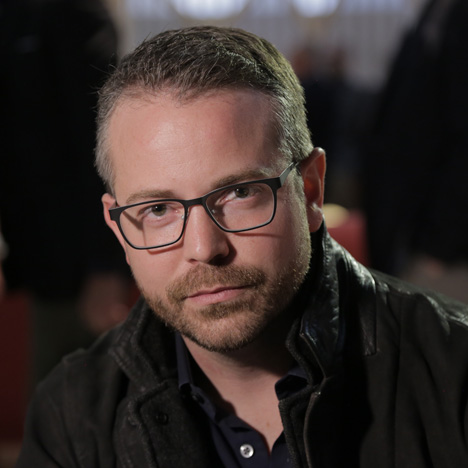
"Designers usually find themselves in this one realm of like 'I'm only doing product', or 'I'm only doing lights'," said Thorpe. "It's a question of limitation and if you talk to somebody in business, it's always about diversification."
"I always had a very difficult time being labelled an American designer," he continued. "My understanding of American design is that it's sort of an empty slogan – it doesn't really exist. America is not a style, America is an idea. And the idea was about diversification and having your own voice."
He explained that New York's design scene is spilt between those like himself working across multiple sectros with international brands, and the "makers" who create custom products themselves and sell through American galleries.
"In the United States we tend to categorise things – put things in boxes – and it sort of limits the designer," he told Dezeen. "Whereas in Europe I found it very different, the sort of approach of understanding what a designer is, and that a designer can pretty much do anything."
Thorpe gained his exposure to the European idea of working across all areas of design sets while working in Florence before settling in New York.
This approach lead to the founding of his eponymous "creative agency" 10 years ago, which allows him to work across multiple disciplines and therefore reach more potential clients.
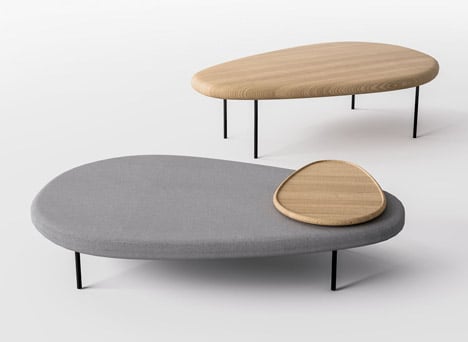
Thorpe met Patrizia Moroso in New York in 2009 while working on an architecture project, for which he designed a custom table that he showed to her. This was the beginning of a long collaboration with the Moroso brand.
"We were able to talk to Patrizia at a certain moment and she decided [the Mark table] was a very nice compliment to a lot of the other products," Thorpe said during a conversation in Milan earlier this year.
During the New York's design week last month, the designer presented three new furniture for Italian brands. These include a range of outdoor furniture produced in Senegal for Moroso, undulating seating and tables for Casamania, and a collaboration with fellow New York architect Dror Benshetrit for Horm.
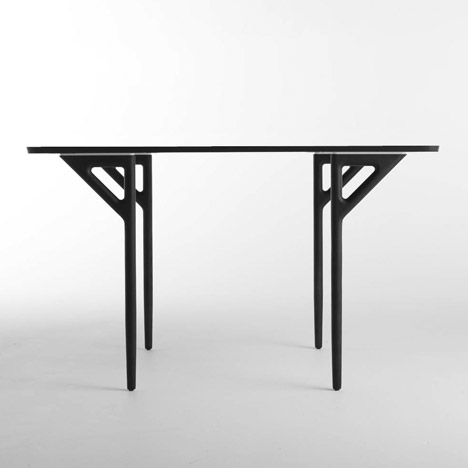
Thorpe thinks that the festival is helping to bring all of the city's designers towards global success.
"This sort of conversation between the different events and the designers is really trying to pull everyone together to sort of leverage and make sure everybody is exposed," he said.
Read an edited version of the transcript from our interview with Marc Thorpe below:
Dan Howarth: Can you explain a bit about your background and how you came to set up your studio?
Marc Thorpe: With my father being a graphic designer and my mother having an Italian design background, I grew up in a home of basically just design – everything from graphics to product and architecture. I just went right into the university studying design and never stopped, there was never a decision to do anything other than just that, it was just in the blood.
I studied at University of Maryland, got a bachelor's degree in industrial design, graphic design, I minored in architecture. Then I came up to Parsons and I got a master's degree in architecture from here.
While I was in school here I also spent two summers working in Florence, for an Italian architect Mauro Lipparinni. And it was really the influence of the Italians that made me want to set up my practice in sort of the same format, which is essentially this kind of multidisciplinary practice of not focusing in one sort of facet of design but going after all skills.
I became very comfortable shifting skills and changing hats, so again being able to go from doing very small products to furniture, which obviously lend themselves into interior architecture, and then into architecture itself.
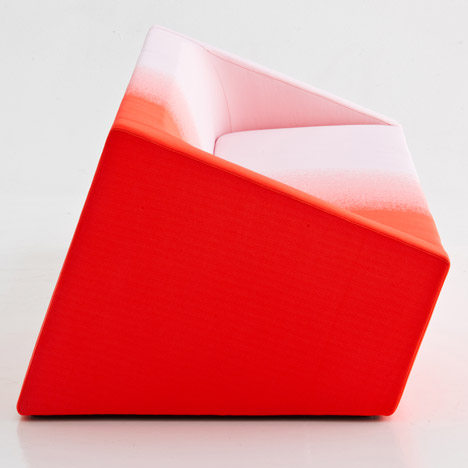
Dan Howarth: How would you describe your studio?
Marc Thorpe: In the United States we tend to categorise things – put things in boxes – and it sort of limits the designer. Whereas in Europe I found it very different, the sort of approach of understanding what a designer is, and that a designer can pretty much do anything.
Of course you can have various backgrounds and training but ultimately like a lot of architects, a lot of designers go into architecture school in Italy and will come out with a master's degree in architecture, sometimes PhDs, but also then go into industrial design and fashion.
That's pretty much what I wanted to do, but then what do you call yourself? Ultimately we ended up developing this studio to be what we call a creative agency, which also lends itself into more of a branding role.
One of the big things that we've been doing recently is like working very closely with brands: everybody from sports apparel, Under Armour, to designing exhibitions for Mercedes. This coming summer we're going to be launching product lines with Stella Artois.
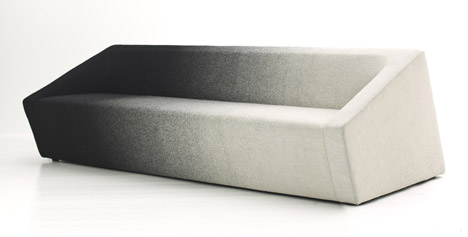
Dan Howarth: So multidisciplinary studios aren't typical for the US?
Marc Thorpe: Not really. Designers usually find themselves in this one realm of like "I'm only doing product", or "I'm only doing lights". It's not a question of right or wrong, but it's a question of limitation and if you talk to somebody in business, it's always about diversification. When things slow down in one area, it's like why can't you have something to balance it off. If architecture slows down, design goes back up and vice versa.
Dan Howarth: What are you working on at the moment?
Marc Thorpe: This year in particular we're going to be launching a new collection for Moroso called Husk, which is all produced in Dakar, Senegal. It's part of the outdoor collection M'Afrique, set up by Salam who's Patrizia Moroso's husband.
We were working together in Senegal to develop this product. I've been working with Moroso for about five years now, and to be able to work on the outdoor collection and travel to Senegal is an amazing experience so that was a lot of fun. It was presented in Milan, and it's going to be presented here in New York this design week.
Another project is with Casamania called Lily. It's a system of low undulating seating and table surfaces. It's a little bit of a fun project in the sense of you are in some ways sitting on a table.
The third project is with Italian company Horm. Horm is a really unique company in that they work very exclusively with architects, like Steven Holl and Toyo Ito. This year I'm launching a small collection in collaboration with Dror Benshetrit. The piece that we're doing is called Ikon, and again it's a very architectural piece about connection, sort of exploratory in terms of structure. It's been a busy year.
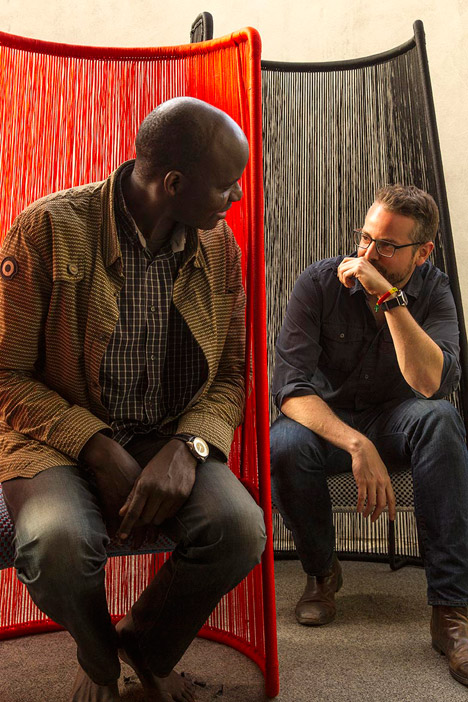
Dan Howarth: What are your thoughts about New York design week?
Marc Thorpe: I've been here about 15 years, and the International Contemporary Furniture Fair (ICFF) that happens at the Javits Centre was always scheduled for this time period in May. Then you saw smaller satellite events that would start to happen around it, galleries and what not. And designers would start to appear.
It was all very segmented, so you had this sort of very massive planet, and these sort of smaller moons floating around it. What has happened over the last 15 years is that the moons have grown so large that they've sort of adjusted their gravitational pull on the larger planet, and so now, they've kind of converged into becoming more of one gigantic show. Which has now been coined NYCxDesign, where the city is now involved, which has been a long time coming.
You have events like WantedDesign, which is one of the larger instigators of pushing forward the agenda of New York City as having a design week. Odile and Claire were two that really pushed that forward. One of the other really amazing things that I think Odile and Claire have done from WantedDesign is they've created unity.
This sort of conversation between the different events and the designers is really trying to pull everyone together to sort of leverage and make sure everybody is exposed. Even down to instances of coming up with this idea of having shuttle buses taking people around, this kind of thing didn't happen 10 years ago. When they showed up it was one of the first things that they tried to do, which was connect people.
So it wasn't just about their show, it was more about this sort of network, a systemic relationship that they have with the city and the designers and the galleries and the showrooms, and they continue to do this. And now they have a very close and one-to-one relationship with ICFF. Where before you could understand it more as competitive, but now it's more cooperative, which is really a beautiful thing.

Dan Howarth: Do you think that has helped the event's importance internationally?
Marc Thorpe: Absolutely, that's the sort of thing that WantedDesign has brought forth: the New York agenda globally. Just recently they partnered with Moooi during the press events that were happening in Milan. That took years to develop relationships with them.
They've developed relationships with all the major Italian brands for the most part, including Cappellini, Moroso, Alessi, Seletti etc. They're all now involved with Wanted, and have some sort of direct dialogue with Wanted on certain events. So they have this sort of agenda that's really pushing forward the New York agenda globally.
Dan Howarth: And what is the New York agenda? What's the interesting stuff that's coming out of this city at the moment?
Marc Thorpe: Obviously New York is a perfect home base for international designers, designers like Jeffrey Bernett, Todd Bracher, Stephen Burks, Dror and myself, these guys work internationally. They're working with companies that are large, very large, Fortune 500 companies. They're also working with large brands like Cappellini, Moroso, Fritzhansen etc.
At the same time, New York also has another camp, which is maybe defined more as the "makers" camp, and these guys started off working directly out of Brooklyn. Designers like David Weeks and Jason Miller, Lindsey Adelman, all these guys and girls were all working and making their own products with a high degree of success in terms of its relationship to the market, architectural market, interior design and product.
We now have talented designers who are working with international companies licensing their products and you've got the makers who are now also going global with their names being presented via galleries and exhibition platforms like Wanted.
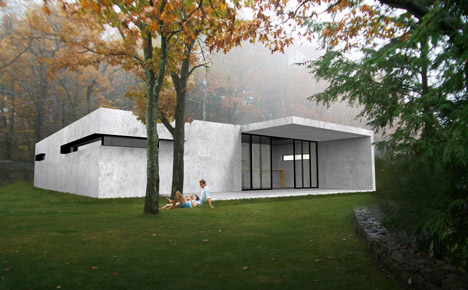
Dan Howarth: Is this a pivotal moment for American design?
Marc Thorpe: What I think is interesting is that you hear about "American style". I always had a very difficult time being labelled an American designer. My understanding of American design is that it's sort of an empty slogan – it doesn't really exist. America is not a style, America is an idea. And the idea was about diversification and having your own voice.
So if you go into it understanding that that's what it is founded on, sort of like "screw everything else and I can do my own thing", whether that be politically or religiously or in design, you really start to have a broad range of specific styles and voices that are all coming out. So it's really hard to label it as American.
We're really like this mutt of all sorts of culture, which is unique. So that's how I define personally what American design is, or American style.
In Europe, you've had time to go through a lot of evolution in terms of cultural definition. Here, we just don't have that. At the same time though we still have something that makes it unique.
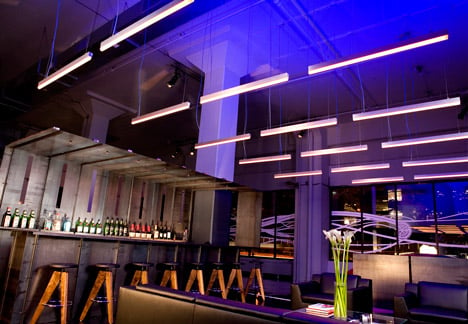
Dan Howarth: Does that also lead to a large variety in the market and the tastes of the consumers?
Marc Thorpe: You're right, we have that sort of large degree of diversification in terms of style. The marketplace actually becomes very challenging, so I guess maybe everybody is fighting for that pinnacle of this is the trend, this is the moment, this is where we're at right now.
If we have this sort of huge gannet of different designers all developing very unique things, they're all competing to be "I'm defining the moment" but maybe that's the society we live in where it's all just like a sound byte.
The value of things last 15 seconds, not 15 minutes anymore. Which is kind of unique, it's true. Dezeen is a media outlet, the information is flowing consistently when I look at it all day, so you can see stuff shifting and changing by the minute.
Dan Howarth: So trends and styles become blurred?
Marc Thorpe: Which is also kind of unique too. Look at the 1920s and 1930s with the Bauhaus and stuff, think about how long it took for that information to get around. We're talking about a decade. And now it just goes so fast. So I don't think there are any more movements anymore. Where's the next movement? I have no idea, it's so hard because it's so decentralised now.

Dan Howarth: And does that affect the way you design? Or do you just do your own thing?
Marc Thorpe: I guess so, it affects you in the sense that you just focus on yourself. Those guys back in the 1930s, they were influencing each other so they had this time to cultivate a movement.
Maybe that's why some people discuss the makers movement as something important because it has been taking time, but all these people are doing very different things. We're just used to a particular type of style that helps group everything together versus very unique different styles.
Dan Howarth: Finally, what's the goal for the next couple of years for you and your studio?
Marc Thorpe: Ultimately trying to put forth a good foot into the global scene, representing New York City. I'm from New York, which is really very much an honour to be able to say that.